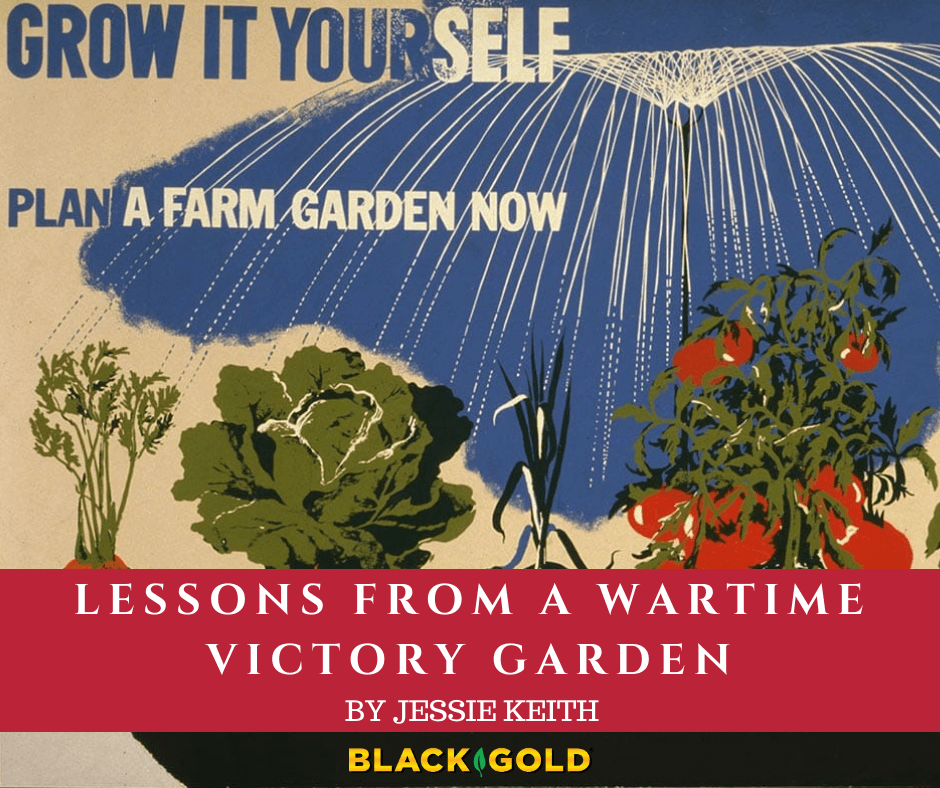
Victory Gardens inspired millions of Americans that had never gardened to grow food to feed their families. Everyday people learned to garden on a homesteading scale. And, my family was no exception. My maternal grandparent’s Victory Garden taught them to fend for themselves, and eat well when wartime rations were most limited.
Tag: Food Gardening
Share the Fruits and Vegetables of Your Garden

This is the time of year when home vegetable gardens reach their peak with summer produce ready for picking. Just walking around my neighborhood, I see that the tomatoes are turning color, a sure sign that the harvest season is upon us. Once summer vegetables begin maturing, they continue at a rapid pace, often too rapidly. Many home gardeners simply plant more than they can eat fresh, with much going to waste. It can be overwhelming. Of course, preserving food by canning or freezing is an option, but sharing one’s vegetable garden abundance is another alternative that has the added benefit of feeding the community.
Share Vegetables with Neighbors
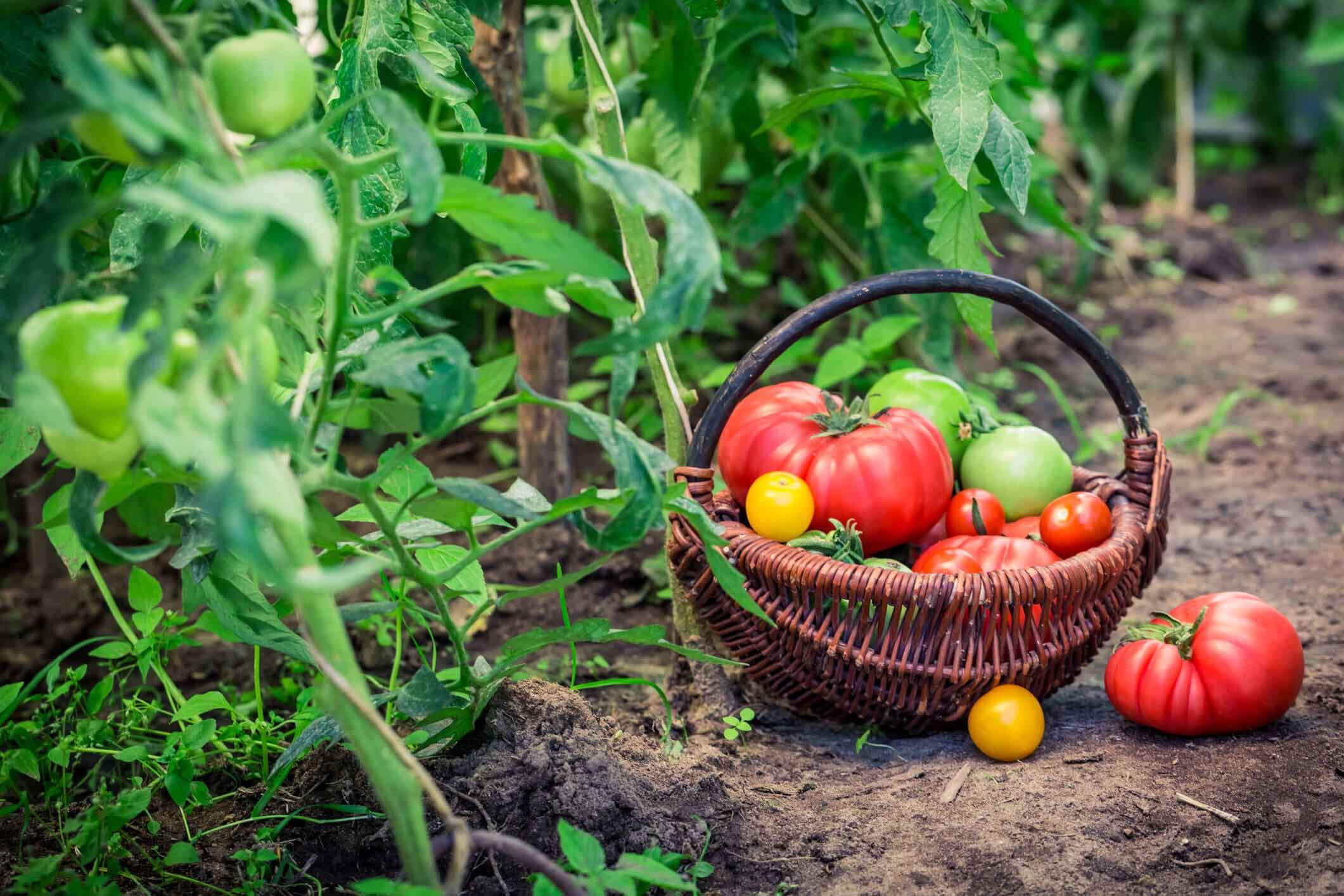
Prolific tomatoes, beans, zucchini, summer squash, and cucumbers are always welcomed by neighbors that don’t garden. In my neighborhood, sharing the fruits and vegetables of the summer season is a common practice, and it has proved to be a wonderful way for neighbors to connect. Once the tomato season starts, I do not think that anyone around us needs to buy a tomato from the store. And, it is fun to listen to neighbors conversing with each other about their favorite tomato.
If you are not sure who to give your veggies to in your neighborhood, try placing a vegetable sharing stand in front of your home. Once your community finds you have fresh veggies to share, they will check your stand regularly, and your vegetables will naturally reach the hands of appreciative takers.
Share Vegetables with Food Banks
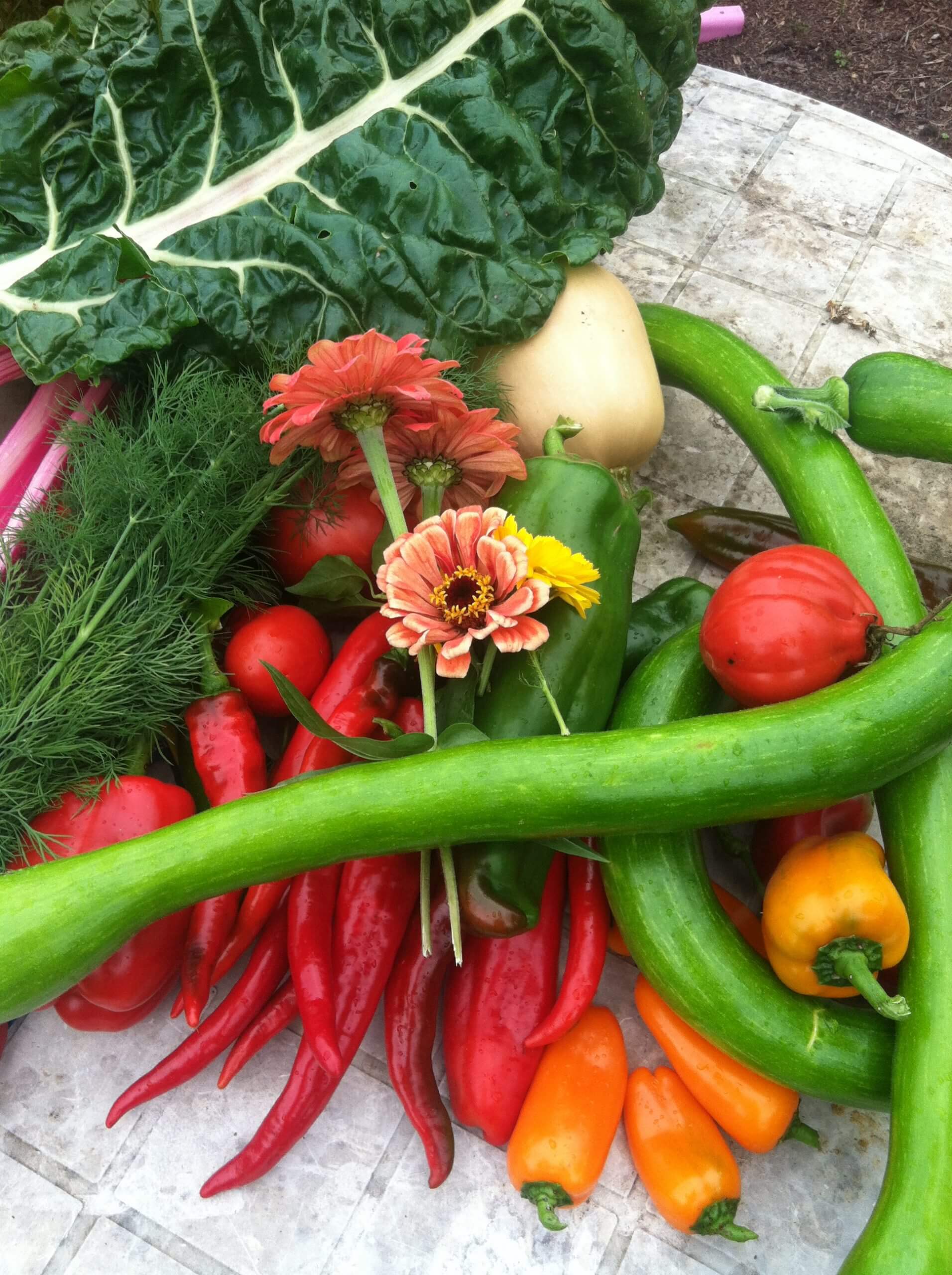
Fresh produce is expensive, which is why many communities offer other options for sharing garden abundance. For example, local food banks always need fresh produce. (Click here to find your closest local food bank.) Many other community service organizations also operate food-sharing services, which may be in closer proximity than a food bank. Local towns and cities often have drop-off places where fresh produce can be deposited, and some garden centers have specific days when they will accept produce.
There are even non-profit organizations geared towards helping home gardeners share their harvest with the hungry. Ample Harvest is a non-profit that helps home gardeners find local produce-sharing outlets, and Feeding America has a Produce Donation Portal that let’s produce donors connect with Feeding America network members.
If you are personally going to deliver to a food bank, it presents a wonderful teaching opportunity for young people. Children need to realize that not everyone has the benefit of having fresh fruits and vegetables in their diet every day. By taking vegetables from their garden and then delivering them to a food bank, children learn the benefits of both sharing and caring. Too often in our world today we are not really connected physically with others, especially those in need. Delivering produce to a food drop off center where people are present will provide a lasting impression.
Plant a Row for the Hungry
 Gardeners can even start the season with the intention to share their produce with others! In 1955, The Association of Garden Communicators (GWA), began a program called Plant A Row for the Hungry (PAR). It encourages gardeners to plant an extra row of produce to donate to local food banks, soup kitchens, or other service organizations that might welcome fresh produce. Since its founding, the PAR campaign has donated over 20 million pounds of produce to those in need. There is no government subsidy, no red tape, just people helping people.
Gardeners can even start the season with the intention to share their produce with others! In 1955, The Association of Garden Communicators (GWA), began a program called Plant A Row for the Hungry (PAR). It encourages gardeners to plant an extra row of produce to donate to local food banks, soup kitchens, or other service organizations that might welcome fresh produce. Since its founding, the PAR campaign has donated over 20 million pounds of produce to those in need. There is no government subsidy, no red tape, just people helping people.
Gardening organizations and companies are also encouraged to get involved. Sun Gro Horticulture, the makers of Black Gold, have supported Plant a Row for the Hungry for years by providing donations of row markers, media, and

other fundraising materials to other PAR gardens. The company has even maintained its own PAR garden at its headquarters in Agawam, MA for the past 17 years. In fact, in their best year they weighed in nearly 450 pounds of fresh produce, thanks to the high performance of Black Gold products! (Read the story of Sun Gro’s PAR garden here.)
With all of the resources that we have in this country, there is no excuse for a child, or anyone, to be deprived of an adequate meal with fresh food. One way to help is by sharing the wealth of your own home garden. Whether you give to your neighbors or to the larger community, you can make a difference in someone’s life by giving fresh, healthy produce.
5 Sustainable Ways Your Garden Can Help the Earth
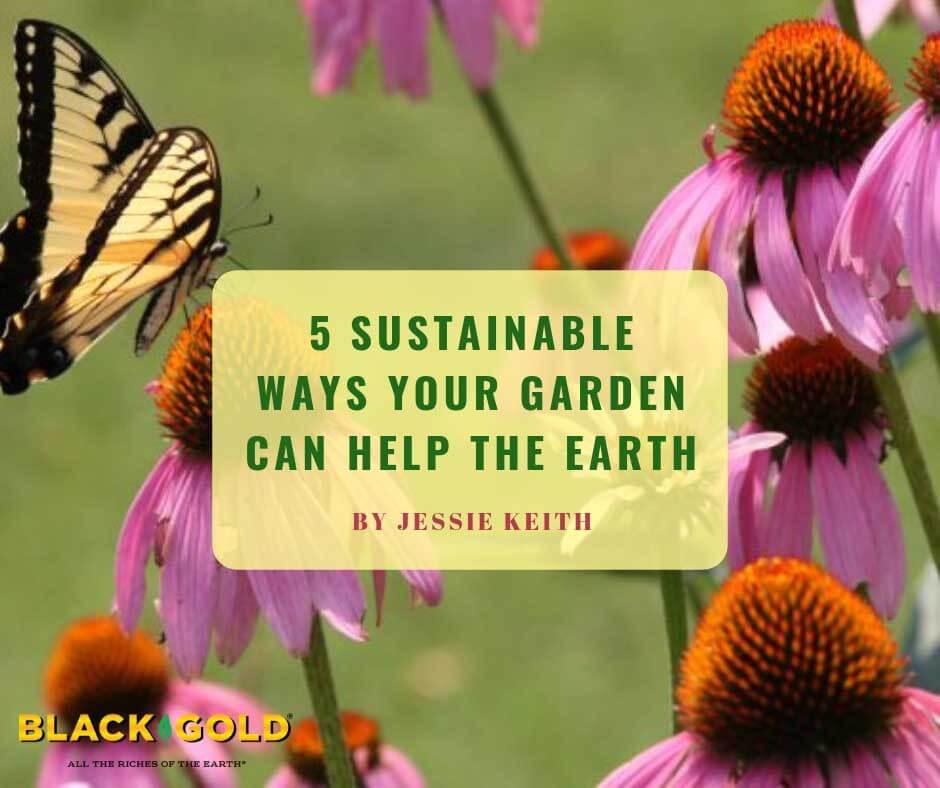
By default, gardens help the Earth by providing vital green space, but there are smart ways to boost a garden’s overall value—environmentally, socially, and economically. Some steps are small. For example, growing your own food organically takes little effort and offers big rewards with fresh, low-cost produce. Composting your own food scraps and fallen leaves reduces landfill waste and results in rich compost for your garden. Similarly, choosing the right garden plants will feed wildlife and make your yard more ecologically sound.
Though often overused and misunderstood, the word “sustainable” is essential in describing Earth-friendly approaches to gardening. As an ecological and social term, the word “sustainable” refers to “the long-term ability to maintain an ecosystem or human society” (Ecology Campus Network, John C. Ayers). In more practical terms, a sustainable home or garden is in a state of balance, consuming no more resources than it produces. A healthy garden that’s in balance ultimately gives back with good food and attractive green space that fuels local flora and fauna.
Here are five easy, important ways to bring sustainability to your yard or garden, no matter what the size.
(1) Create a Certified Wildlife Garden

The National Wildlife Federation has made it easy to create a Certified Wildlife Garden in your own yard by providing a list of the steps needed to naturally feed wildlife. Several factors need to be considered if you want to certify your garden.
The first step is to ensure there are several types of natural, native food types in your garden, to include pollen/nectar, berries, nuts, and seeds. Next, you need a freshwater source for wildlife in your yard; this could mean a birdbath, fountain, or any natural water source near the house. Some form of natural cover is required, which could include shrubby areas, thickets, or wooded areas. The creation of spaces for animals to raise their young, via cover plants, larval food plants, or nesting boxes, are also required. Those with little space may choose to plant milkweed (the food plants of monarch caterpillars) or install a nesting box for songbirds. Finally, those with Certified Wildlife Gardens must commit to gardening sustainably. That means gardening organically, managing invasive exotic weeds, and helping to manage natural rainwater.
(2) Garden Organically

It is far easier to garden organically than most think. The key is to naturally feed your soil and plants, and choose resistant plants able to grow in your yard without the need for chemical fertilizers, pesticides, or herbicides. (Read more about resistance gardening and smart plant choices here.) Good plant care and management are also needed to safely stop unwanted pests and diseases from taking over your garden beds.
Feeding your soil with OMRI Listed amendments and fertilizers approved for organic gardening is essential. (Learn more about OMRI standards by clicking here.) Black Gold offers a wide array of OMRI Listed Amendments and Potting Mixes ideal for organic gardening. Just adding enriching compost and earthworm castings into your soil can make the difference between a mediocre gardening experience and a great one. Supplemental organic fertilizer will encourage your plants to grow and product to their fullest. Feeding plants with mixes enriched with the RESiLIENCE® additive has also been shown to boost their natural defenses.
Integrated Pest Management (IPM) is the long-term approach taken to safely managing pests, and organic growers achieve it without the need of unapproved chemical pesticides. (Click here to view the list of green pesticides approved for organic gardening.) Techniques include pest monitoring, biological controls, preventative garden cleanup, and the use of approved natural chemical controls. (Click here to download the full Organic IPM Field Guide.)
Finally, smart, chemical-free weed management will ensure your plants will have space and resources to really shine. Choose great weeding tools, such as the sturdy Rogue Prohoe or efficient Korean ho-mi (hoe-mee) hand tool, to make weeding easy. Manage weeds when they are still small, and apply lots of organic mulch to keep them from emerging. We recommend placing a 2″ layer of Black Gold Garden Compost Blend around your vegetables and garden flowers to keep weeds down. Other recommended natural mulches include seed-free hay, pine straw, and composted leaf mulch.
(3) Grow Your Own Food, & Share Your Harvest!
 If you garden using organic methods, then any food crops you grow will be pesticide free. What’s essential is choosing garden plants that are tough, resilient, and worry-free. Lots of fruits and veggies are easy-to-grow choices great for new gardeners. Carefree tree fruits for the garden include disease-resistant strains, such as crisp, sweet ‘Liberty’ and spicy golden PRISTINE® apples, fireblight-resistant ‘Moonglow’ pear, and darkest red. Easy spring vegetable crops include fast-growing lettuces, carrots, radishes, snap peas, and beets. The best non-stop summer crops for novice gardeners include tomatoes (Click here for tomato growing tips!), peppers, basil, and summer squash/zucchini. Finally, easy fall veggies include broccoli rabe, turnips, beets, and Swiss chard.
If you garden using organic methods, then any food crops you grow will be pesticide free. What’s essential is choosing garden plants that are tough, resilient, and worry-free. Lots of fruits and veggies are easy-to-grow choices great for new gardeners. Carefree tree fruits for the garden include disease-resistant strains, such as crisp, sweet ‘Liberty’ and spicy golden PRISTINE® apples, fireblight-resistant ‘Moonglow’ pear, and darkest red. Easy spring vegetable crops include fast-growing lettuces, carrots, radishes, snap peas, and beets. The best non-stop summer crops for novice gardeners include tomatoes (Click here for tomato growing tips!), peppers, basil, and summer squash/zucchini. Finally, easy fall veggies include broccoli rabe, turnips, beets, and Swiss chard.
If you have a healthy harvest, share it with your friends or the local food bank. Most communities have avenues for crop sharing. One of the best is Plant a Row for the Hungry (PAR), an effort sponsored by the Garden Writers of America and promoted by Sun Gro Horticulture. To find a local PAR representative and make a donation, click here. Local food banks are always willing to take extra produce from overly successful gardeners. Feeding America also has a Food Bank Finder that will make finding your nearest food bank easy.
(4) Choose Regional Native Plants
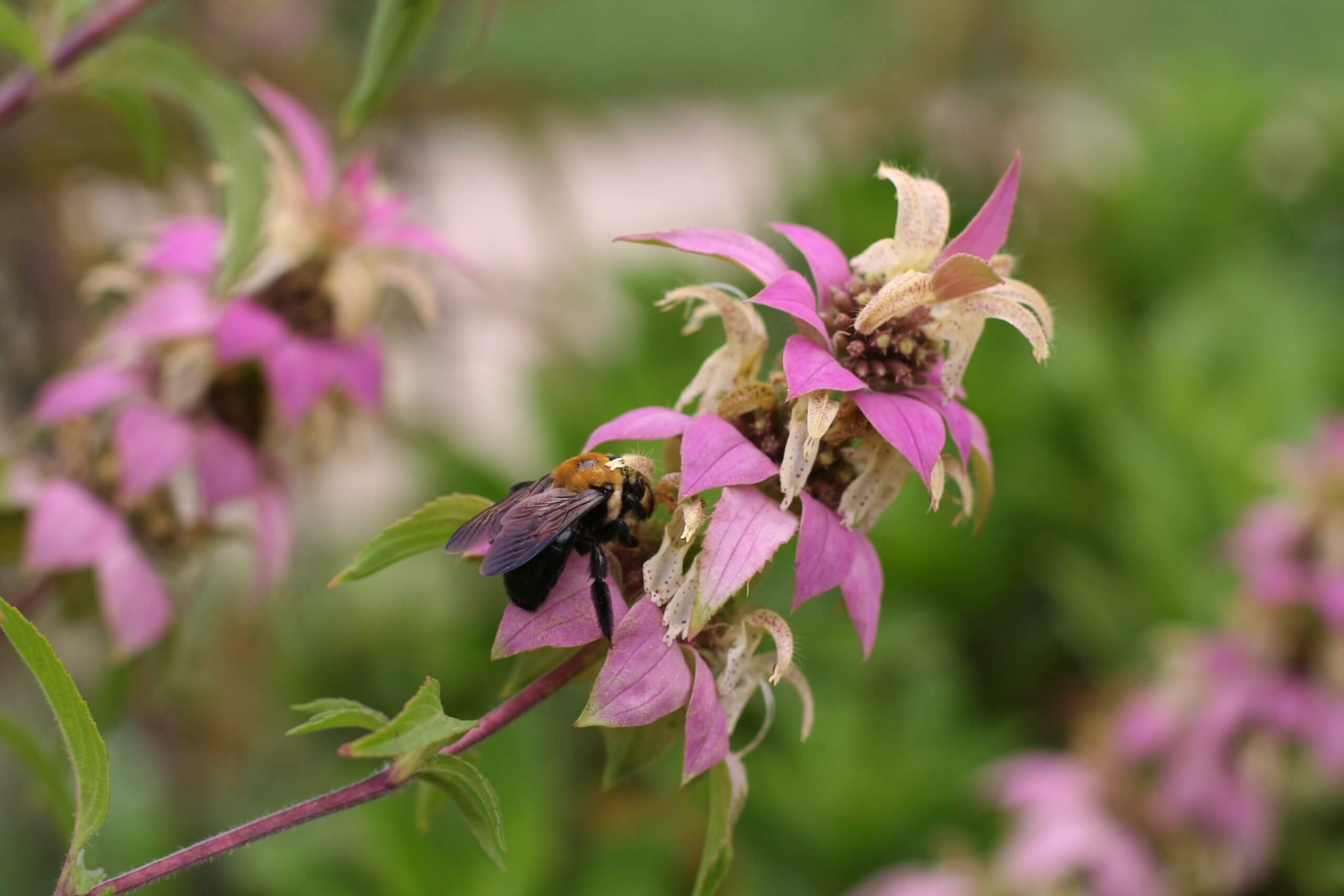
Regional natives and adapted landscape plants grow best in local landscapes and have the added bonus of feeding local wildlife. There are many good resources gardeners can turn to to find the right ornamental plant choices for their landscapes. One such resource is Landscape for Life, a national effort dedicated to helping gardeners garden sustainably. The principals of the program are based on the Sustainable Sites Initiative™ program (SITES™), a comprehensive program used by industry professionals to maintain sustainability standards. Landscape for Life offers guidelines for choosing the best natives for your landscape. The partnering organization, the Lady Bird Johnson Wildflower Center, has a comprehensive Native Plants Database that allows gardeners to search for desirable regional natives for their area.
(5) Compost Green Scraps & Yard Waste
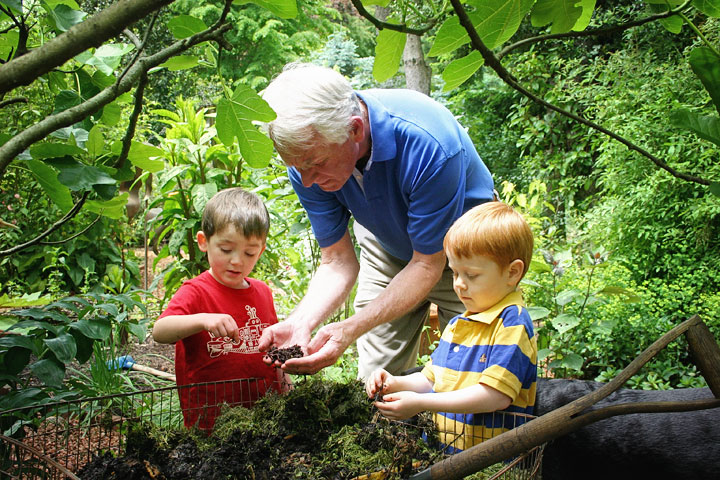
Composting takes less effort than most gardeners think. It’s a fast, easy way to get rid of organic kitchen scraps, grass clippings, and autumn leaves, and the end result is a great natural amendment for the yard and garden. Start by choosing a composter—whether purchased or made. Spacious, self-made composters are great if you have the space for them (Click here for plans).
There are three things required to make good compost fast: small organic waste, water, oxygen, and nitrogen. Add vegetable scraps, grass, and leaves, but refrain from adding large sticks, bones, or meat products (unless you want a smelly pile that attracts raccoons and rats.) The pile needs to be at least 4 feet high and wide to generate enough internal heat to properly compost. Refrain from 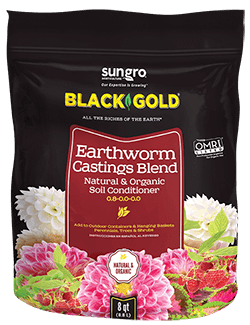 packing pre-composted scraps tightly; good aeration helps the composting process.
packing pre-composted scraps tightly; good aeration helps the composting process.
For fast breakdown, piles must be kept moist, occasionally turned for aeration, and intermittently treated with supplemental nitrogen to help the process. An occasional sprinkling of Black Gold Earthworm Castings, which is rich in nitrogen, can aid the composting process.
After a month or so, the pile should be hot in the center and start breaking down into compost. Properly decomposing piles will shrink. Well-tended compost takes 4 to 8 months to mature. The final product should be dark, soil-like, and crumbly.
Make a Resolution!
Embrace the New Year by upping your garden’s value through sustainable practices. Taking one or two of these steps to increase your garden’s “green” value may seem small, but imagine the impact if all gardeners took a similar approach. As gardeners, we truly can help the Earth one step at a time!

